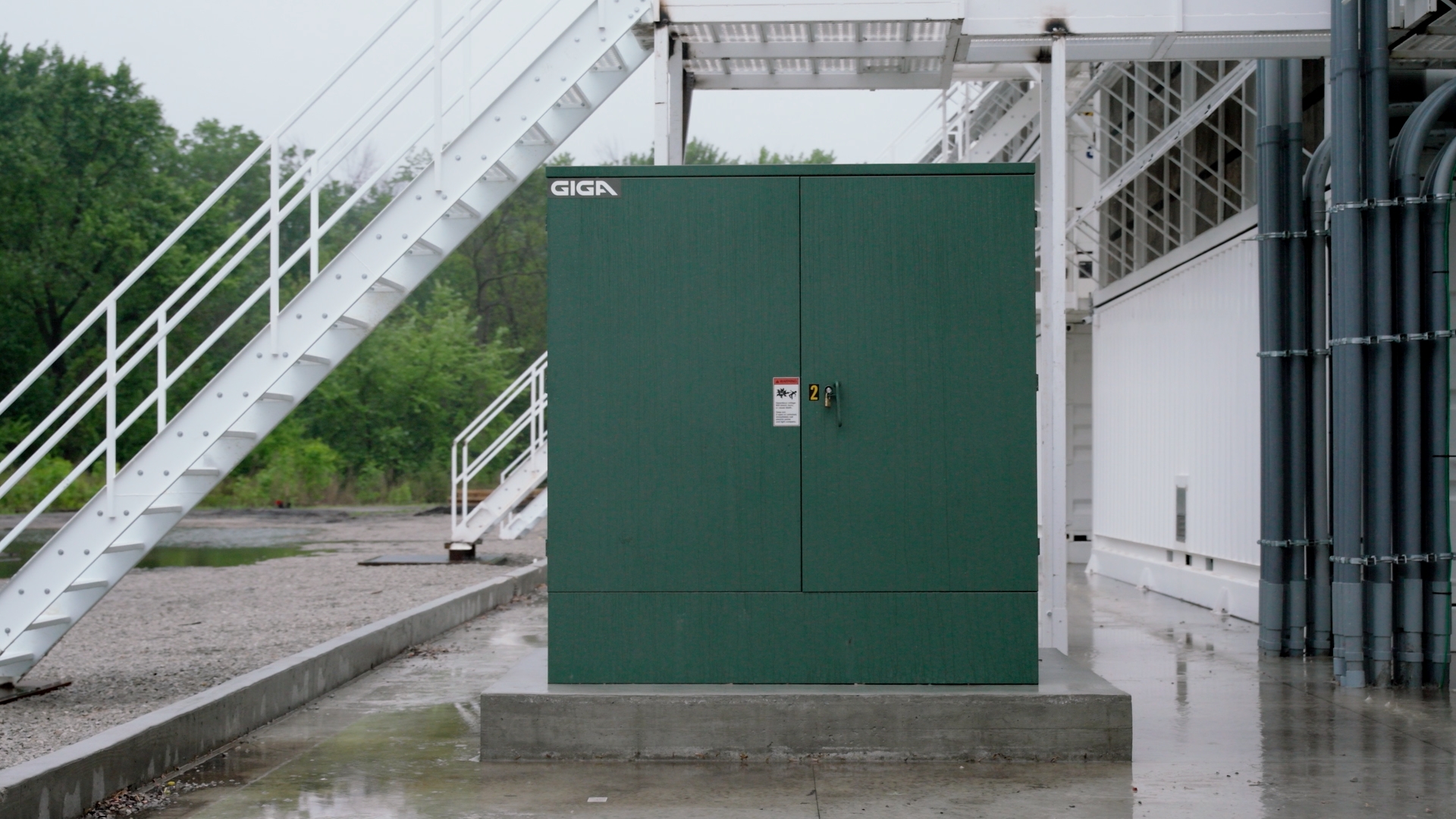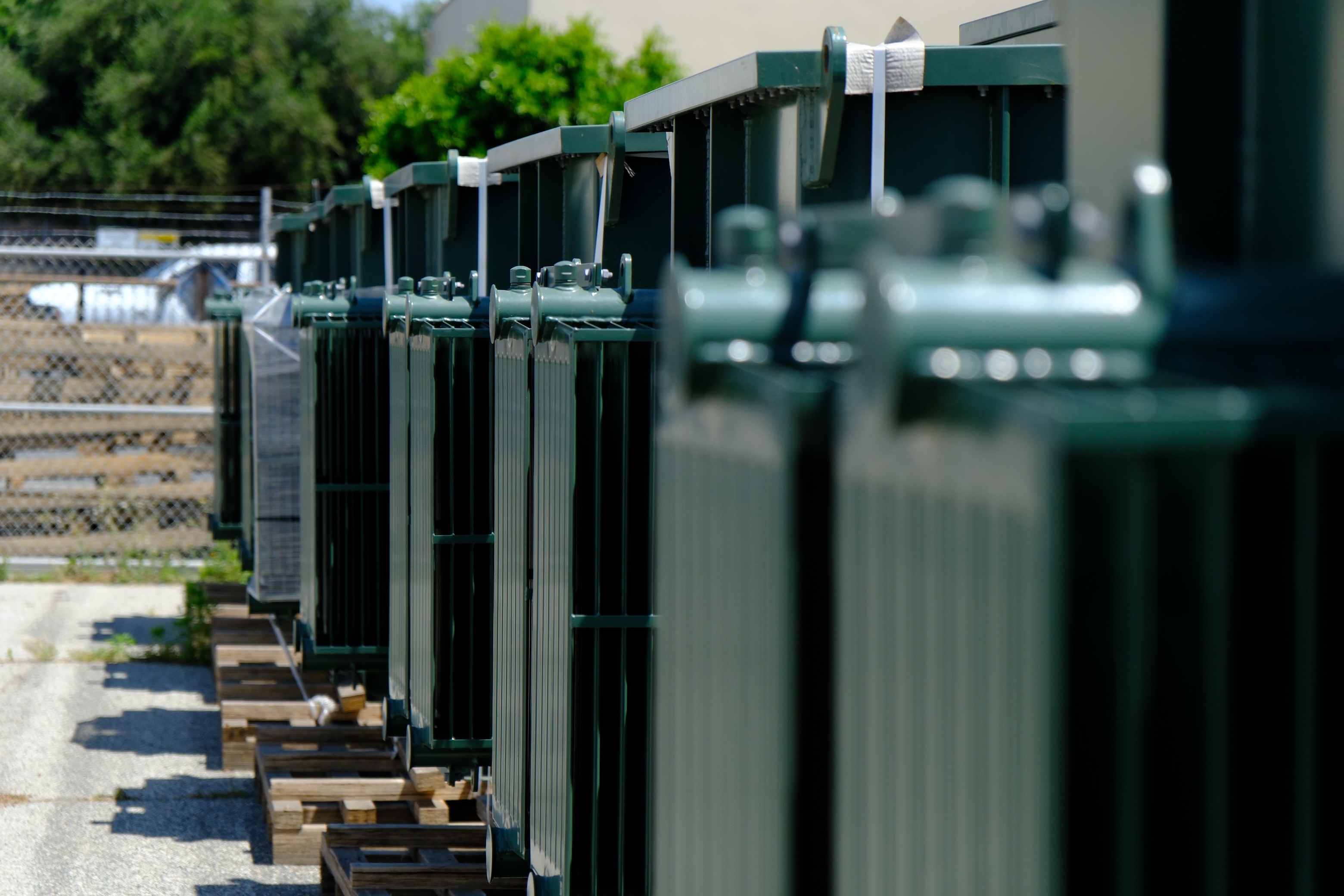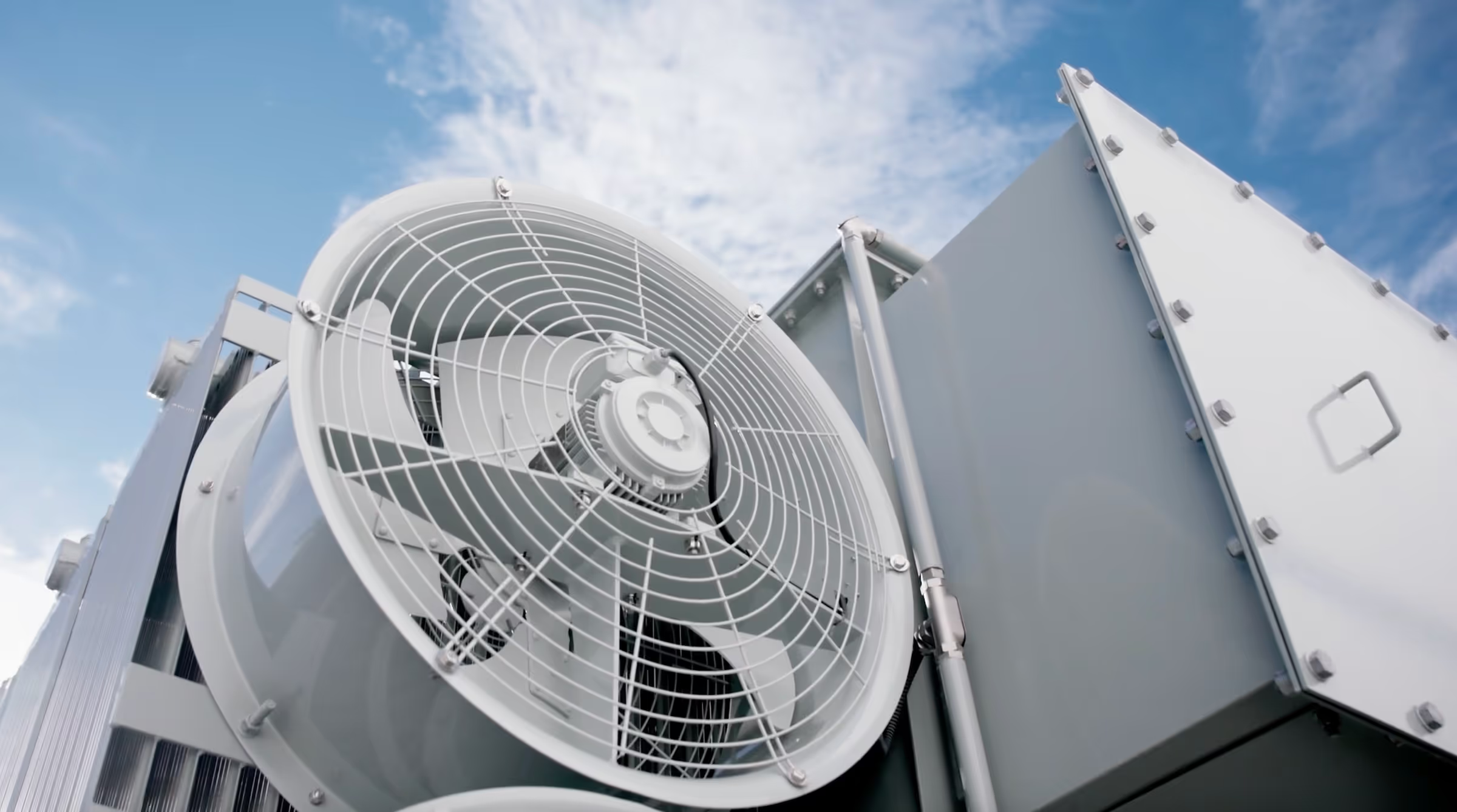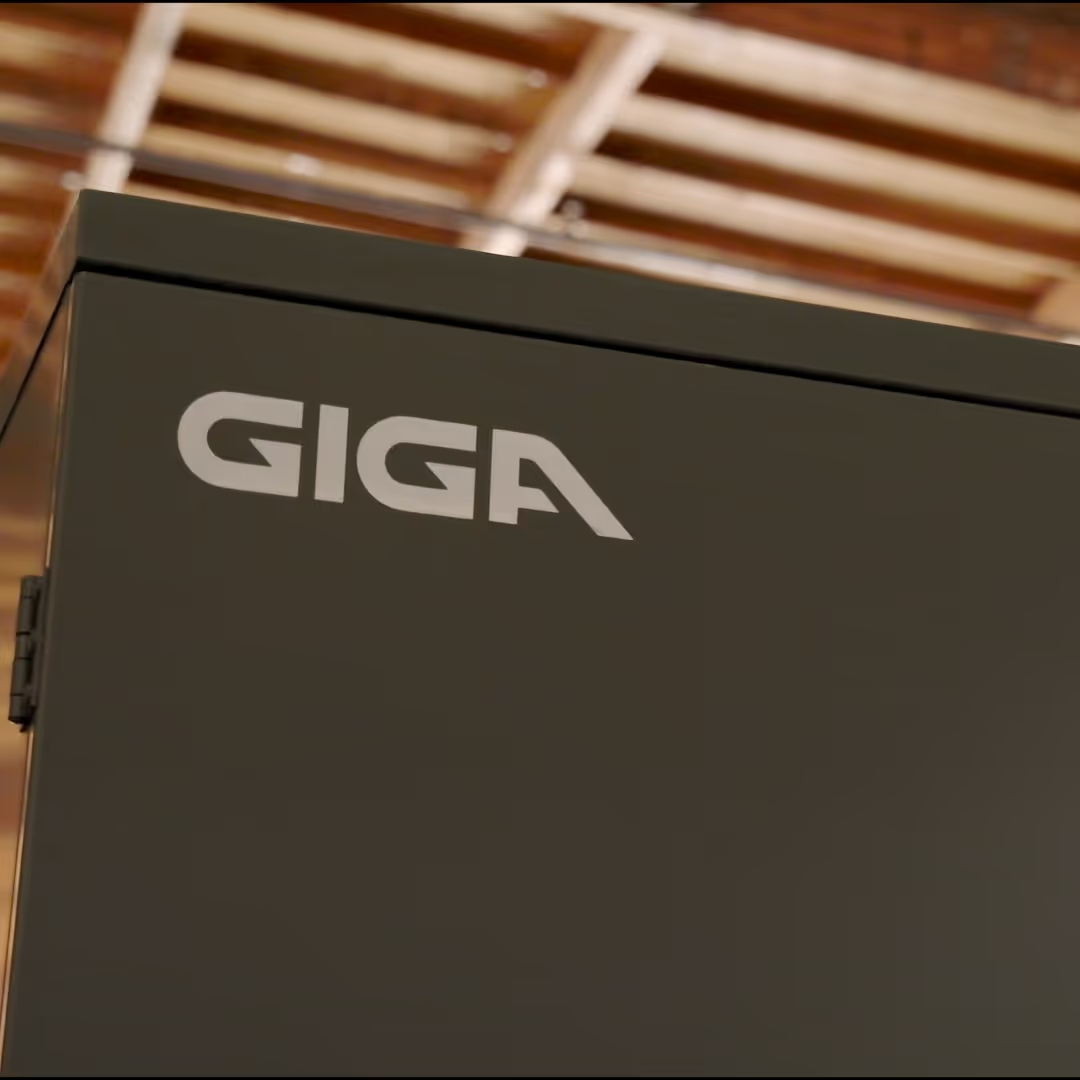If you're working with power infrastructure (specifying, sourcing, or maintaining equipment), then you need to understand everything about electrical transformers. From long-distance transmission to local power distribution, transformers are crucial components in power systems, helping to control voltage, protect equipment, and keep systems running efficiently.
This guide is designed for electrical distributors, manufacturer reps, and engineering teams making high-stakes decisions about power infrastructure. You'll learn how transformers work, how to select and maintain them, how emerging technology is reshaping their design, and more.
What is an electrical transformer?
To understand what a transformer does, let’s start with the basics: a transformer is a static electrical device that transfers energy between two or more circuits using electromagnetic induction. It doesn’t generate power; it simply adjusts voltage levels so power can be safely and efficiently used or transmitted. It “transforms” the voltage, hence the name.
If you’ve ever plugged a laptop into a wall outlet or seen a substation along a highway, you've encountered a transformer at work. The transformer’s job is to raise or lower voltage levels as needed, stepping up the voltage for long-distance transmission or stepping it down for safe use in homes, offices, or industrial equipment.
The simplest form of a transformer includes a core made of laminated steel and two windings of insulated wire, called the primary and secondary coils. When AC flows through the primary winding, it generates a magnetic field that causes voltage to appear in the secondary winding.
This core concept leads directly to how different transformer designs are engineered for specific applications.
Types of electrical transformers
Not all transformers are created equal. Their design, size, cooling method, and use case determine how well they perform in specific environments.
Common transformer categories
- Power transformers: Found in transmission networks, these are built to handle high voltages (typically above 33 kV). They're large, liquid-cooled units designed for continuous, high-load operation. They can be step-up or step-down in power flow (see below).
- Distribution transformers: These reduce voltage from transmission levels to end-user levels, usually below 33 kV. They're widely used in commercial, residential, and industrial settings.
- Step-up transformers: These raise voltage levels and are often used at power generation facilities to prepare electricity for transmission across long distances. These are called generator step-up transformers, or GSUs.
- Step-down transformers: These reduce voltage, often to achieve safe, usable voltage levels near the point of utilization.
Common transformer designs
- Pad-mounted transformers: Ground-level units enclosed in steel cabinets, these are common in urban areas and industrial parks where underground service is required.
- Pole-mounted (overhead) transformers: Mounted on utility poles, these serve rural or low-density areas with overhead lines or locations where installing underground service conductors would be challenging, such as old but dense urban areas.
- Substation transformers: Heavy-duty transformers intended for use in a substation yard, typically found in areas inaccessible to the general public.
Learn more: Types of transformers
Key components of electrical transformers
Now that we’ve covered types of electrical transformers, let’s examine what makes them work.
Core and windings
Transformer cores and coils handle the voltage conversion that moves electricity efficiently from one point to another. The engineering behind these components is critical. Poor design means energy loss through heat, which reduces efficiency and shortens equipment lifespan. Better core and coil design equals less waste, better performance, and longer-lasting equipment.
- Core: Made from laminated silicon steel or amorphous steel to channel magnetic flux efficiently and reduce energy loss due to eddy currents.
- Windings: Typically, copper or aluminum coils that carry current. Winding configuration impacts the voltage ratio and load capacity.
Learn more: Transformer cores and coils
Protective and functional elements
- Insulation: Materials like paper and oil separate conducting parts, preventing arcing and ensuring safe operation.
- Enclosure/tank: Shields internal parts from weather, mechanical damage, and environmental contaminants.
- Cooling system: Dissipates heat. Can be air-based (dry-type transformers) or liquid-based (oil-immersed transformers).
- Bushings: High-voltage feed-throughs that prevent flashover.
- Tap changer: Allows operators to fine-tune voltage output without opening the enclosure.
- Transformer gauges: Provide real-time measurements on pressure, temperature, and oil levels within the tank.
Learn more: What are transformer bushings, and what’s their function?
Transformer gauges
Reliable transformers require accurate monitoring. Whether using analog dials or digital telemetry, gauges serve as the first warning system for impending issues. They monitor key parameters, such as temperature, pressure, and liquid levels, allowing maintenance teams to ensure the transformers are operating as they should. There are two primary ways to install transformer gauges:
- External gauges: For padmount transformers, external gauges are mounted outside of the main cabinet and are housed in a designated, accessible, lockable, weatherproof box. This provides a layer of protection and allows for safe and easy manual access and inspection. For substations, external gauges are mounted directly to the transformer and are exposed.
- Internal gauges: For padmount transformers, internal gauges are installed inside the low-voltage side of the transformer cabinet, generally in areas that are not easily accessible. This keeps them protected from the elements, but can make maintenance and monitoring more difficult and dangerous. For substations, internal gauges are installed in weatherproof boxes or ATCs. Smart transformers often have internal gauges integrated into their systems, delivering real-time data via SCADA and other platforms.
Deciding whether to use internal or external gauges depends on several factors. To learn more, visit our complete guide on external vs. internal transformer gauges.
How transformers work
The way transformers work is based on the principle of electromagnetic induction. An AC current in the primary winding generates a magnetic field, which fluctuates with the current. A voltage is generated in the secondary coil, and the difference in the number of turns between the primary and secondary windings decides whether the voltage increases or decreases.
How well the core and windings are designed is a major factor in the transformer’s efficiency. Losses primarily occur through resistive heating in the windings, eddy currents in the core, and magnetic hysteresis. High-quality materials and precision engineering help reduce these inefficiencies.
Learn more: How do transformers work?
Understanding step-up vs. step-down transformers
Step-up and step-down transformers convert voltage to the levels devices need for safe, efficient operation. At the heart of this voltage transformation is the turn ratio:
- Step-up transformers: Have more turns in the secondary than the primary coil. These increase voltage and are often used right after power generation (GSUs).
- Step-down transformers: Have fewer turns in the secondary coil than the primary coil. They decrease voltage, often for local distribution and equipment use.
These applications are foundational to the transformer deployment strategy. Knowing which one you need depends on your energy flow direction and end-user voltage requirements.
Learn more: Understanding step-up vs. step-down transformers
The role of harmonics in electrical transformers
Modern electrical systems are full of devices that draw power in non-linear ways. Think of variable frequency drives (VFDs), computers, LED lighting, and other electronic equipment. Unlike traditional loads that draw a smooth, sinusoidal current, these non-linear loads distort the normal waveform. This distortion is called harmonic distortion, and it introduces frequencies into the system that aren’t supposed to be there, which bog down the overall system by taking away from the clean, usable power.
When harmonics pass through a transformer, they cause several issues. The most immediate problems are excess heat and vibration, which can degrade insulation, shorten equipment life, and reduce overall efficiency. Harmonics also increase core losses and cause extra stress on the winding and magnetic components.
To handle these conditions, K-rated transformers are specially designed to withstand the additional heating caused by harmonic currents. The “K” rating (such as K-4, K-13, or K-20) indicates how much harmonic content the transformer can handle without being damaged. These transformers come with features like enhanced insulation systems, lower internal losses, and optimized impedance design to reduce the impact of distorted waveforms.
Ignoring harmonics in your design can lead to premature transformer failure, higher maintenance costs, and power quality issues throughout your system. That’s why it’s critical to assess the types of loads your transformer will serve and plan accordingly, especially in commercial or industrial settings where non-linear loads are common.
Fusing options for padmount transformers
Fuses are small but essential components that help keep padmount transformers safe. They play the role of a safety switch, which means they cut off power when something goes wrong (like a short circuit or an overload), which prevents damage to the transformer and the equipment connected to it.
However, even though they all function in a similar way, not all padmount transformers are exactly the same. Bayonet fuses, for example, are placed inside the electrical transformer and are easy to swap out without shutting down the whole system. Current-limiting fuses are often utilized when a fuse that will step in fast during serious faults to keep the damage to a minimum is needed. They are often used in conjunction with bayonets. Bayonet assemblies can take a number of different fuse links. Dual-sensing fuse links are a popular choice if you want to go for something a bit more advanced that can keep an eye on both heat and current to catch problems early.
Learn more: Fusing options for padmount transformers
Fluid options for liquid-cooled electrical transformers
In liquid-cooled transformers, the fluid inside the tank serves two main purposes: it cools the internal components and insulates them electrically. These fluids flow around the transformer windings and core, carrying away heat and preventing electrical arcs between internal parts. Without the right cooling and insulation, transformers can overheat, short-circuit, or break down early.
Choosing the right fluid is just as important as selecting the right transformer, especially if you want to meet safety codes and environmental regulations.
Mineral oil is the traditional and most widely used fluid in transformers. It’s affordable, has good insulating and cooling properties, and performs reliably in most standard applications. However, it’s also flammable, which can pose risks in indoor installations or areas where fire safety is a major concern.
For environments where fire risk must be minimized, such as hospitals, data centers, or densely populated urban areas, silicone fluid offers a safer alternative. It’s more fire-resistant and chemically stable at high temperatures. While it comes with a higher price tag, the added safety and reduced maintenance can make it a worthwhile investment in critical installations.
Natural esters, also known as vegetable-based or bio-based fluids, are becoming increasingly popular for their environmental benefits. They’re biodegradable, derived from renewable resources, and have a high fire point, which improves both safety and sustainability. These fluids are especially well-suited for environmentally sensitive sites, such as near water sources or in protected natural areas, and are often chosen to help meet green building standards or reduce environmental liability.
Learn more: Transformer cooling methods
Transformer safety standards: IEEE, NEMA, and NEC requirements
To ensure your transformer system runs reliably, stays efficient, and passes inspections, you must stay on top of transformer safety standards. These guidelines and regulations help engineers and facility managers design, install, and maintain transformers that hold up under pressure and meet legal requirements.
Here are two major standards every transformer project should follow and why they matter.
IEEE C57 Series
This is the go-to standard for the design and performance of power transformers. The IEEE C57 series covers everything from insulation aging to how well a transformer can handle short-circuit conditions. It also includes testing procedures that ensure transformers can stand up to real-world demands, not just lab conditions. If you're looking at long-term reliability and lifecycle performance, this is the framework to build on.
NEC Article 450
Once you’re ready to install a transformer, the National Electrical Code (NEC) comes into play, specifically Article 450. This section covers how transformers should be grounded, protected from overloads, and safely installed. It’s a must-follow guide for contractors and inspectors, and it ensures that your installation meets both safety and legal standards.
Electrical transformer applications
Let’s connect technical specs to real-world use. Transformer applications break down by voltage and purpose:
- Low-voltage (<1 kV): Office buildings, elevators, and home appliances
- Medium-voltage (1–35 kV): Factories, hospitals, and commercial complexes
- High-voltage (>35 kV): Transmission lines, wind farms, and substations
These categories determine not only transformer specs but also installation type and regulatory scrutiny.
How to specify electrical transformers for projects
Transformer specs must match both technical and environmental constraints:
- Define your load profile: How much power do you need now, and how much will you need in 5 years? Bear in mind that while typical loads are measured in active/usable power (watts “W”), transformers are measured in apparent power (volt-amperes “VA”). A lot goes into the conversion of the two (such as power factor), but a quick rule of thumb is that your usable power is around 85% of your apparent power. So if you need 1MW of power, your transformer should be sized around 1.17MVA.
- Confirm primary/secondary voltages and phase configuration. For a 3-phase transformer, this will typically be either Delta or Wye connection.
- Consider impedance, cooling method, and insulation class.
- Factor in site conditions: temperature, humidity, and altitude.
Collaborate with engineering teams early to avoid redesigns or capacity bottlenecks.
Electrical transformer configuration and installation
Getting the configuration and installation right is essential for a reliable, safe transformer system.
Three-phase vs. single-phase
Your system's configuration depends on the type of load and the environment. In industrial and commercial environments, three-phase transformers are the standard. They’re designed to handle higher loads and provide balanced power across systems, which improves efficiency and stability.
For lighter applications, such as in homes or rural areas, single-phase transformers are more common. They’re simpler, more cost-effective, and ideal for locations where the power demand isn’t as high.
Installation methods
Where and how you install your transformer also impacts performance, safety, and cost.
- Pad-mounted transformers are installed at ground level in locked, weatherproof enclosures. They’re ideal for urban and high-density areas because they’re safe, tamper-resistant, and easier to maintain.
- Pole-mounted transformers are attached to utility poles and are quicker and cheaper to install, especially when space or underground access is limited. They’re usually seen in rural or suburban settings.
- Substation transformers are larger, custom-built units found in power distribution stations. They include dedicated protection and control equipment and are engineered to meet specific voltage and capacity needs.
Installation best practices
Regardless of the installation type, it is essential to keep installation best practices in mind. Grounding should always meet National Electrical Code (NEC) and local code requirements to ensure safety and system stability. Outdoor installations must use weather-rated enclosures to protect against moisture and corrosion. It’s also important to verify that all cables, breakers, and connectors are properly sized and rated for the system’s load.
Learn more: Safe harbor energy regulations in the U.S.
Maintenance best practices for electrical transformers
Keeping a transformer in good shape isn’t complicated, but it does require consistency. Regular, targeted maintenance not only prevents unexpected failures but can also extend the life of a unit by decades.
- Start with the oil: Transformer oil not only cools the system, it also insulates it. Over time, that oil breaks down or becomes contaminated. Regular oil analysis can reveal early signs of problems, like moisture, dissolved gases, or particles that indicate insulation aging or arcing. Catching these signs early lets you plan repairs before things get expensive.
- Don’t skip the visuals: A quick look can tell you a lot. Bushings, those porcelain or polymer parts where wires connect, are especially worth checking. Look for cracks, discoloration, or oil leaks. These may seem small, but they often point to deeper internal stress.
- Use the right tools: Infrared thermal imaging is a non-invasive way to scan for hot spots while the transformer is energized. It’s one of the easiest ways to catch loose connections or overloaded components early. On the electrical side, tools like a megger or winding resistance meter help test insulation quality and winding health, both crucial for long-term performance — however, this part of maintenance is typically performed by a servicer, not the buyer of a transformer.
- Think ahead: Proactive maintenance helps avoid outages while also staying compliant with safety and performance standards. Most regulations now require regular condition monitoring and recordkeeping, so staying on top of maintenance is part of staying audit-ready.
Common electrical transformer failures
Even with regular maintenance, electrical transformers can still fail, but the root causes are usually predictable. Understanding them makes it easier to prevent the worst-case scenarios.
Load-related stress
Running a transformer near or over its rated load for long periods can overheat components and stress the insulation. Unbalanced loads where one phase carries more current than the others are just as dangerous since they create uneven heating that wears things down faster.
Cooling system issues
If the radiator fans stop working or the oil isn’t circulating properly, internal temperatures can spike. Once that happens, insulation begins to degrade quickly, and failure becomes a matter of time.
Aging insulation
Insulation naturally wears down with age and use, especially in harsh environments. Contaminants like moisture or oxygen can speed up the process. That’s why oil testing is so important: it gives you a window into the health of the insulation without taking the unit offline.
Physical damage
Sometimes, the damage starts before the transformer is even turned on. Improper handling during shipping or installation can crack internal components or misalign parts. That’s why careful inspection before energizing a new or relocated unit is always a smart move.
How to avoid these problems
Most failures can be traced back to poor planning or skipped maintenance. Specifying quality equipment, following proper installation steps, and committing to regular checks go a long way. When transformers are treated as long-term assets, rather than set-it-and-forget-it machines, their reliability improves dramatically.
The future of electrical transformers
Transformers are changing fast to keep up with how we use and produce electricity today. Demands like integrating more renewable energy, smarter maintenance, and planning for growing power needs are driving changes that make transformers more reliable and efficient. Let’s look at the main trends shaping their future.
Intelligent monitoring
Many of today’s transformers come with built-in sensors that monitor important things like oil level, temperature, and load continuously. These sensors send real-time information so operators can spot problems early. Using smart alerts, they can fix issues before a breakdown happens, which saves time and money.
Load growth planning
Cities and towns are growing, and so is the demand for electricity. When designing transformers, engineers now choose models that can easily handle more power as the area expands. This means new buildings, electric cars, or factories won’t overload the system, and upgrades won’t cause major disruptions.
Grid modernization
The power grid is becoming more flexible and less centralized. Transformers are getting smarter and more eco-friendly to match this change. They help the grid respond quickly to changes and use energy more efficiently, which supports a cleaner and more reliable power supply.
Where to buy electrical transformers
Whether you're starting a new project or revisiting the specs of an existing setup, our team can help you choose the right fit for your project. Contact us today to talk through your requirements and timelines, get up-to-the-minute information on in-stock inventory, and get a custom quote.





